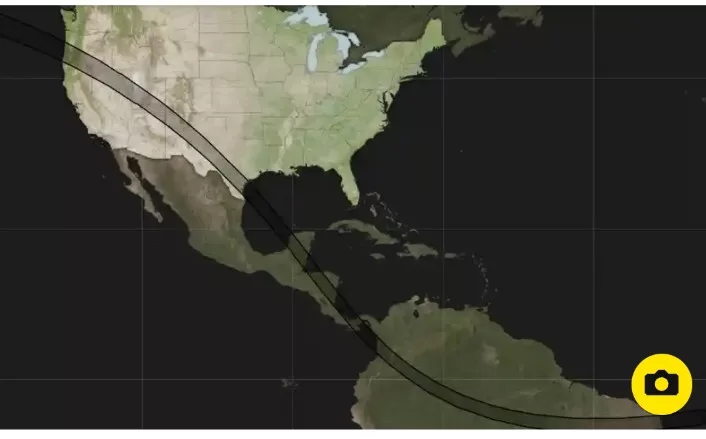In a celestial spectacle, millions of individuals across a vast expanse of the continental United States will have the unique opportunity to witness an annular solar eclipse, revealing a luminous “ring of fire” encircling the sun. This awe-inspiring event is set to take place on Saturday, captivating skywatchers from coast to coast.
The direct path of this remarkable eclipse will traverse segments of eight states, extending from the pristine landscapes of Oregon to the sun-soaked plains of Texas. Moreover, a partial eclipse, sans the characteristic ring of fire, will be discernible in all of the 41 remaining continental states, including the remote state of Alaska.
For those unable to experience the phenomenon in person, NASA will provide a live broadcast of the event, featuring mesmerizing views from telescopes positioned along the eclipse’s trajectory.
An annular solar eclipse is a unique astronomical occurrence in which the moon maneuvers itself between the sun and the Earth, albeit at or near its farthest point from our planet. The moon appears smaller than the sun, creating a striking visual where it does not completely obscure the sun but instead superimposes a dark disk over a larger, more radiant one, effectively crafting the illusion of a blazing ring surrounding the moon.
In light of this celestial extravaganza, NASA is advocating a cautious approach, imploring individuals not to observe the event directly with the naked eye. Instead, the space agency recommends relying on specialized eclipse glasses, solar viewers, or solar filters affixed to telescopes. As an alternative, they suggest using indirect viewing methods, such as a pinhole projector.
Scientists are seizing this rare opportunity to study the effects of an abrupt reduction in sunlight on the upper atmosphere. Three NASA “sounding rockets” will be launched into the eclipse’s shadow from the White Sands missile range in New Mexico to capture essential data regarding atmospheric alterations.
The annular eclipse will begin its celestial journey above Alaska, before gracing the skies of central and southern Oregon around 9:13 AM PT. From there, it will follow a southeastern course, making its celestial passage across portions of California, Nevada, Idaho, Utah, Arizona, and New Mexico. Ultimately, it will span a considerable portion of Texas before venturing into the vastness of the Gulf of Mexico.
This celestial extravaganza will grace the United States for approximately one hour. Beyond its borders, the Yucatan peninsula, along with several countries in Central and South America, spanning from Belize to Brazil, will also be immersed in the path of this celestial marvel.






